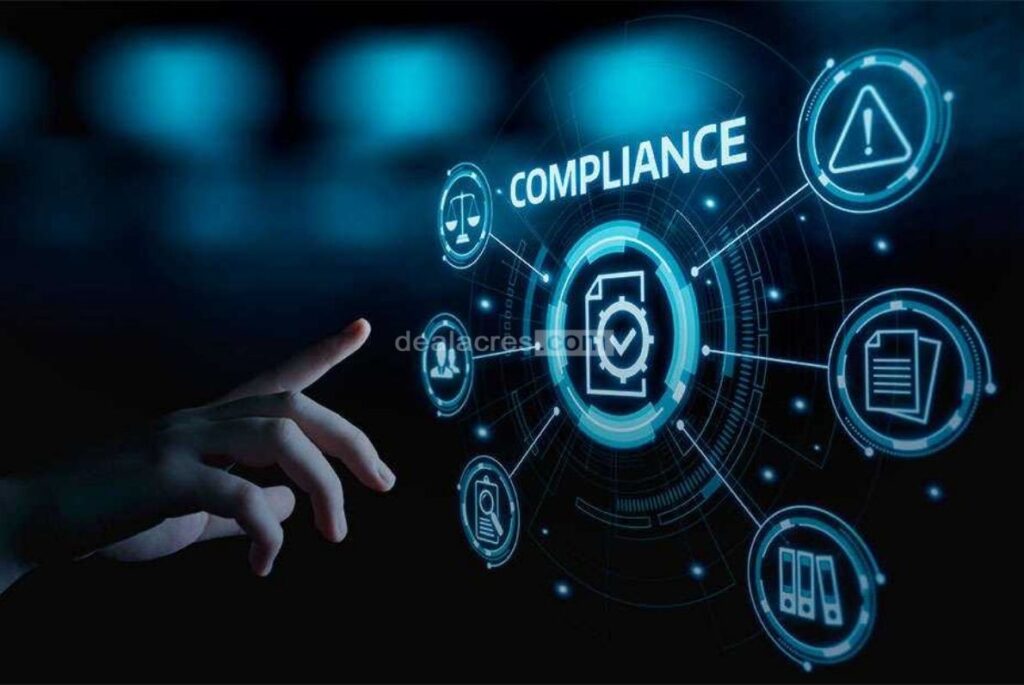In the bustling world of business, there’s a constant dance between innovation and regulation. While innovation drives progress, regulations ensure that businesses operate ethically and responsibly. Navigating regulatory compliance is crucial for ensuring the sustainability of any business. In this article, we’ll explore what regulatory compliance entails, why it’s essential, and how businesses can effectively navigate this complex landscape.

Understanding Regulatory Compliance
Regulatory compliance refers to the adherence of an organization to laws, regulations, guidelines, and specifications relevant to its business operations. These regulations can span various areas such as finance, environment, data protection, labor, and more.
Why Regulatory Compliance Matters
Compliance isn’t just about avoiding fines or legal troubles; it’s about maintaining trust and credibility. When a company complies with regulations, it demonstrates a commitment to ethical conduct and respect for societal norms. Customers, investors, and other stakeholders are more likely to trust and support businesses that operate transparently and responsibly.
Non-compliance, on the other hand, can have serious consequences. It can lead to hefty fines, legal battles, damaged reputation, and even business closure. Moreover, in today’s interconnected world, non-compliance in one area can have ripple effects across the entire business ecosystem.

Key Components of Regulatory Compliance
- Awareness: The first step in navigating regulatory compliance is to be aware of the relevant laws and regulations. This requires continuous monitoring of regulatory changes and updates at the local, national, and international levels.
- Risk Assessment: Once aware of the regulations, businesses need to assess their current practices and identify areas of non-compliance or potential risks. This involves evaluating internal processes, systems, and policies to ensure they align with regulatory requirements.
- Implementation: After identifying areas for improvement, businesses must take action to implement necessary changes. This may involve updating policies, investing in new technologies, or providing training to employees.
- Monitoring and Review: Compliance is not a one-time effort; it’s an ongoing process. Businesses need to establish monitoring mechanisms to track compliance status continuously. Regular reviews help identify emerging risks and ensure that corrective actions are taken promptly.
- Documentation: Documentation plays a crucial role in regulatory compliance. Businesses must maintain accurate records of their compliance efforts, including policies, procedures, training materials, audit reports, and communication with regulatory authorities.
Challenges in Navigating Regulatory Compliance
Navigating regulatory compliance is not without its challenges. Some of the common challenges businesses face include:
- Complexity: Regulatory requirements can be complex and subject to interpretation. Navigating through multiple regulations and understanding their implications can be daunting, especially for small and medium-sized enterprises (SMEs).
- Cost: Achieving and maintaining compliance often requires financial resources. This can be particularly challenging for SMEs with limited budgets.
- Constant Change: The regulatory landscape is not static; it’s constantly evolving. Keeping up with regulatory changes and updates requires time, effort, and expertise.
- Globalization: Businesses operating in multiple jurisdictions face the added complexity of navigating different regulatory regimes. Harmonizing compliance efforts across borders can be a significant challenge.
- Cybersecurity: With the increasing reliance on digital technologies, cybersecurity has emerged as a critical aspect of regulatory compliance. Businesses need to ensure the security and privacy of sensitive data to comply with regulations such as GDPR and CCPA.

Best Practices for Navigating Regulatory Compliance
While navigating regulatory compliance can be challenging, there are several best practices that businesses can adopt to streamline their compliance efforts:
- Invest in Compliance Management Systems: Implementing dedicated compliance management systems can help automate compliance processes, streamline workflow, and ensure accountability.
- Stay Informed: Keep abreast of regulatory changes and updates by subscribing to relevant publications, attending industry conferences, and engaging with regulatory authorities.
- Training and Education: Provide regular training and education to employees on compliance requirements and best practices. Employees are the frontline in compliance efforts, so it’s essential to empower them with the necessary knowledge and skills.
- Collaboration: Foster collaboration between internal departments and external stakeholders, including legal experts, regulators, industry associations, and peer organizations. Sharing knowledge and best practices can help navigate complex regulatory landscapes more effectively.
- Proactive Approach: Take a proactive approach to compliance by conducting regular risk assessments, internal audits, and compliance reviews. Identify and address potential issues before they escalate into compliance failures.
- Seek Expert Advice: When in doubt, seek expert advice from legal counsel, compliance consultants, or industry experts. They can provide guidance and insights tailored to your specific business needs.
Conclusion
In today’s highly regulated business environment, navigating regulatory compliance is essential for ensuring the sustainability and success of any organization. By understanding the key components of compliance, recognizing the challenges, and adopting best practices, businesses can effectively navigate the complex regulatory landscape. Remember, compliance is not just about following rules; it’s about fostering trust, integrity, and responsible business conduct.
By prioritizing compliance, businesses can build a solid foundation for sustainable growth and contribute positively to society and the environment. So, embrace compliance as a strategic imperative, and navigate the regulatory landscape with confidence and integrity.




